How to prepare garlic for planting?
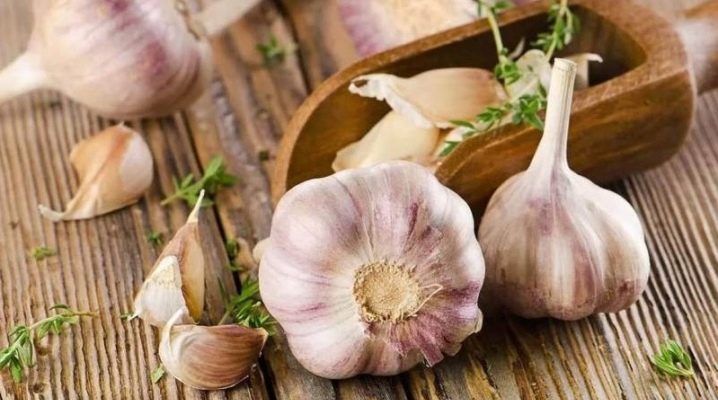
The cultivation of garlic can be practiced for personal use as well as for commercial purposes. A high quality product is consistently in high demand in the autumn-winter period. In this case, the preparation of planting material plays a very important role: if you do not pay enough attention to this, the harvest will turn out to be nondescript and small.
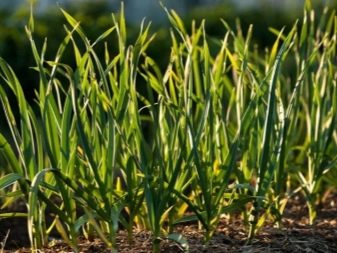
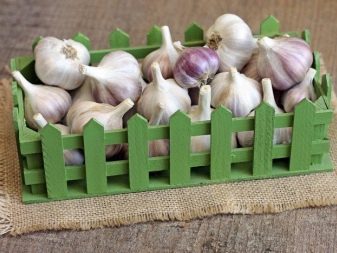
The need for preparation
Preparation of garlic heads for autumn and spring planting is the main stage of pre-sowing activities. The fact is that this culture reproduces vegetatively, therefore, all bacteria, fungi and other pathogenic microflora that remain on the parent vegetable will certainly be present on the planting teeth. The heads selected for planting often fall prey to garlic rot. To keep them in good condition and subsequently get high quality bulbs and arrows, garlic must be decontaminated.
The greatest effect is given by industrial fungicides, as well as copper sulfate and potassium permanganate. Many summer residents prefer salt, ash lye and other folk recipes. If you do not carry out pre-sowing treatment, then, with a high degree of probability, the winter will be difficult for the seedlings. Many of them will rot, and in the spring the multiplied rot spores will destroy the remnants of the seedlings, so the bed simply will not rise.
Pathogenic microorganisms tend to spread rapidly. This problem can be solved only by sorting, calibration of the material and its disinfection.
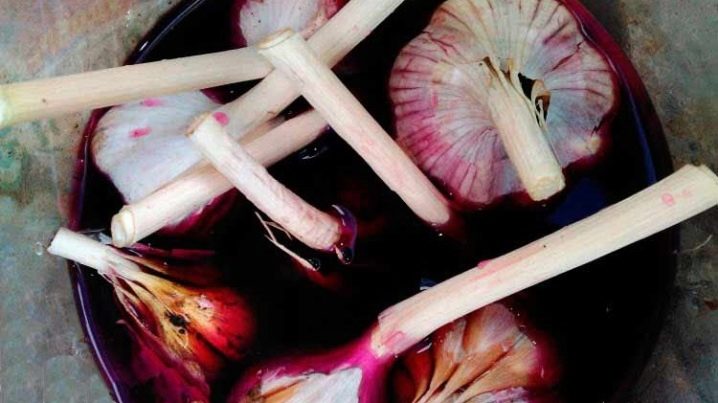
Seed selection
For autumn planting, varieties of winter garlic are used, for spring - spring garlic. Heads should be carefully inspected and sorted according to several criteria before being placed in the ground.
- Bulb size. Small heads are unsuitable for planting, as the crop will fully inherit the original parental sizes. Therefore, it is advisable to lay only dense and large bulbs.
- The mass of cloves. When growing garlic for the purpose of selling it, the principal factor is to obtain heads of approximately the same size. In this case, it is better to take the teeth approximately corresponding to each other in weight. If there is no obvious need to get the same fruits, then this item can be safely excluded.
- Visual characteristics. The parent fetus should not show signs of rot, damage or other severe diseases. The teeth must be hard, and if even one of them has an infection, then the entire head is considered diseased. Such material is unsuitable for planting.
- Skin density. In healthy garlic, the skin should be strong, without cracking, fit snugly to the body of the fruit.
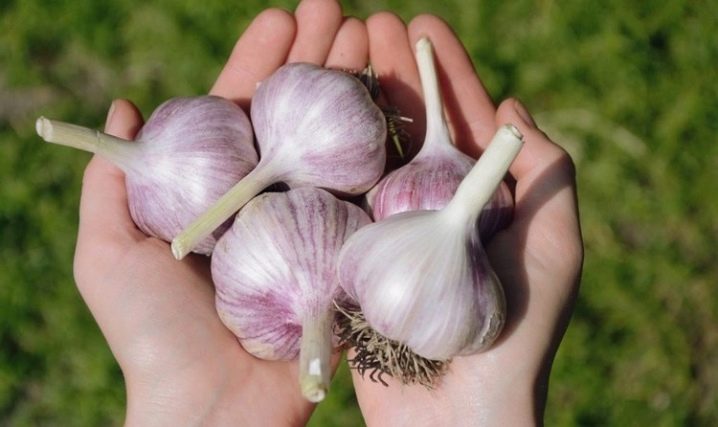
After calibrating and sorting the heads, it is necessary to disassemble them and examine each tooth separately. Seedlings with spots, deformations and damage are not suitable for planting. Pay attention to the bottom: young roots should be visible on it. If they are not there, such a clove is most likely not viable, it will not germinate.
Experienced gardeners usually choose the planting material that was grown and harvested in the climatic zone of the gardener's region. Such fruits will be fully adapted to the characteristics of the soil and weather factors. If you take imported varieties for planting, then there is a high risk that the new conditions will not suit the plant. It will not rise, or it will rise, but it will soon perish.
Before placing the plant in the ground, it is necessary to carry out the hardening procedure at a temperature of 0 to +5 degrees. To do this, you can simply put the heads in the refrigerator for 25-30 minutes. This treatment is carried out 2 months before the planned date of planting the garlic in the ground. After that, the onion is divided into separate cloves: this must be done as carefully as possible so as not to damage the integrity.
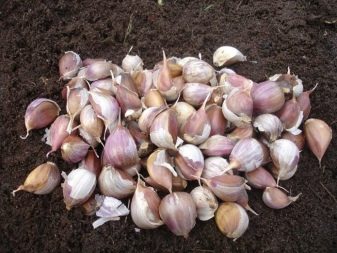

If only seeds are available, they should also be cold treated before planting. The difference lies only in timing: the seeds are kept in a cool place for 1 month. This procedure ensures the rapid formation of young shoots and allows the garlic to grow large heads. In addition, such a vegetable will not be afraid of winter frosts.
Drying in the oven is considered an alternative way to prepare the prongs. To do this, the oven is heated to 40-42 degrees, the baking sheet is lined with a sheet of parchment and the cloves of garlic are carefully distributed over it. Drying is carried out within 9-12 hours, turning the cloves from time to time. When doing this, leave the oven ajar to ensure ventilation. If you do not follow these rules, then the garlic will be baked in its own juice, lose its vitality and will not sprout.
Novice summer residents often ask if garlic requires peeling before planting. Everything is very simple here. By nature, each clove in the head is covered with its own individual shell: this is important in order to maintain the health of seedlings at the stage of ripening in the ground. If this shell is removed, the teeth will be open to fungi, insect pests and viruses.
In addition, by removing the protective layer, you can damage the bottom of the root system, then the teeth will not be able to start new roots.

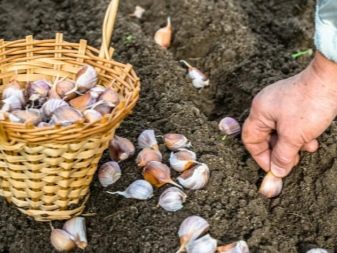
Processing methods
Depending on the preferences of the owner of the site, chemical or folk methods are used for soaking. They allow seedlings to set up faster and protect future crops from parasites.
Chemicals
You can disinfect garlic seedlings with fungicides, insecticides, and growth accelerators. Copper sulfate has become widespread, and the popularity of this fungicide is due to its high disinfecting properties. Soaking the seed in a solution of copper sulfate allows you to quickly destroy all pathogenic microorganisms that inhibit the growth of the vegetable. To prepare a working solution, 5 g of crystals are stirred in a liter of water until complete dissolution and the cloves of garlic are soaked for 10-15 minutes. After that, the seedlings are taken out, blotted with a dry napkin and dried in the air. Important: after drying, a slight bluish bloom will remain on the cloves. It does not need to be cleaned: it creates protection against diseases and insect pests.
Potassium permanganate is one of the most powerful antiseptic drugs that have a destructive effect on most fungi. In addition, permanganate saturates the seedling skin with potassium, which is very important for the full growth and development of the plant. For processing, prepare a pale solution and mix thoroughly. The presence of undissolved crystals in it is not allowed: they can burn the seed.
The minimum soaking time is 10 minutes, the maximum is 1 hour. After that, the cloves are left to dry in the open air.
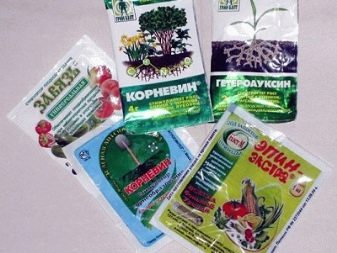

Fungicide "Maxim" Is an industrial drug that has established itself as an effective means of preventing fungal pathologies in vegetable crops. The solution is sold in ampoules, diluted in a liter of water in strict accordance with the instructions. The cloves are placed in the nutritional composition for half an hour. Tip: the resulting liquid can be used for additional processing of the soil immediately before planting the garlic.
Fitosporin has a detrimental effect on bacteria and fungi.Processing the cloves of garlic in it prevents the appearance of root rot, rust, powdery mildew, as well as late bacterial infections. The composition contributes to the accelerated growth of vegetable crops. Dilute "Fitosporin" follows the instructions, processing is carried out within 30 minutes, after which it is naturally dried.
Fundazol became widespread not only as a prophylactic agent: it is also widely used to treat diseases. However, it is toxic to humans and should be used with extreme caution. The solution is prepared at the rate of 10 g of the drug per 0.5 liters of water, the cloves are soaked for a day.
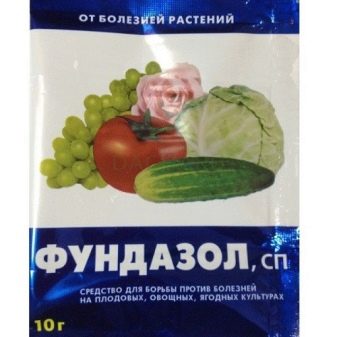
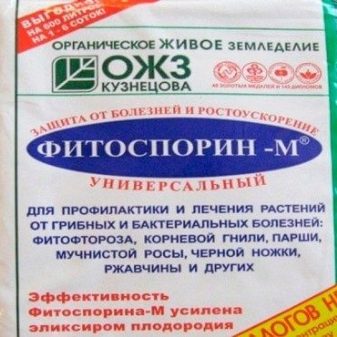
Traditional methods
Some gardeners prefer folk remedies. Most often they use a saline solution. Salt is an affordable remedy, it is available in the kitchen of every housewife. At the same time, few people know that it is capable not only of changing the taste of the dishes being prepared, but also has pronounced disinfecting properties. To process the cloves of garlic, a concentrated composition is prepared based on 2 tablespoons of salt and a liter of water, and for maximum effect, you can add a teaspoon of baking soda. The solution is thoroughly mixed, after which the garlic is soaked in it for 15-30 minutes. Penetrating inside, salt destroys all fungi and bacteria.
Ash gives a good effect. It is best to get ash liquor from buckwheat, rye straw, corn stalks, as well as pine and birch firewood. Ash is crushed to a dusty state and dissolved in water. This solution is rich in calcium and potassium hydroxides, which give an alkaline reaction and thereby protect the cloves of garlic from damage by pathogenic microorganisms. In addition, ash is a mineral fertilizing, contributes to improved growth and development of plants. To prepare the composition, three glasses of fly ash are diluted in 3 liters of water, heated over a fire, brought to a boil, and then cooled. As soon as the water cools down to room temperature, you can place the garlic in it for one and a half to two hours.
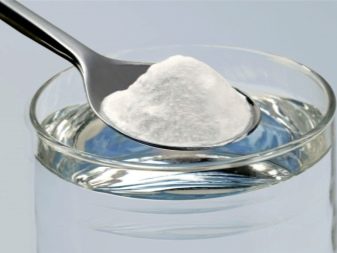
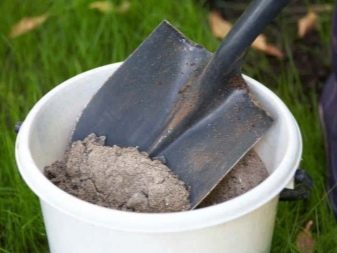
Tar provides effective protection of the developing fruit from rotting and the appearance of onion flies. It is 100% safe for the environment and people. For the preparation of a disinfectant solution 1 tsp. the tar is dissolved in a liter of water, stirred and the cloves of garlic are placed for half an hour. Processing is carried out immediately before planting in open ground. Slightly less commonly, ammonia is used.
If you pay special attention to sorting, sizing and properly prepare the garlic before planting, then the vegetable will easily endure the winter cold., and with the arrival of spring, it will show resistance to the effects of fungi, bacteria and insect pests. It is the pre-sowing preparation that becomes the key to obtaining a rich harvest. With high-quality processing of the cloves, strong, hardy fruits are obtained, which will give equally productive bulbs the next year.
Preparation does not take much time and effort. Having followed fairly simple recommendations, you will be satisfied with the volume and quality of the harvested crop.














The comment was sent successfully.